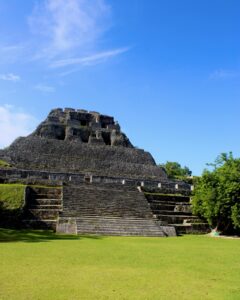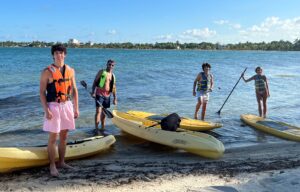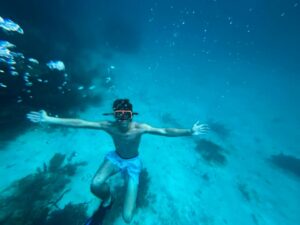Review of Cockscomb Basin Wildlife Sanctuary

History: Concern for the viability of Belize’s jaguar population didn’t arise until the 1980s, when wildlife conservationists and government officials compared notes on the frequency of jaguar references found in hunting magazines. A graduate student was hired to estimate the jaguar population and he declared that the “highest density” of jaguars ever recorded were at the Cockscomb Basin. The government of Belize stepped in and declared the Basin a no-hunting forest reserve in 1984, but wildlife experts remained worried that this designation didn’t sufficiently protect jaguars and other wildlife, so that designation was upgraded to wildlife sanctuary in 1986.What you’ll see: If you expect to encounter nothing but four legged creatures while visiting this Belize hot spot, you’re in for a surprise. Majestic waterfalls, trails and mountain peaks are home to all sorts of creatures, including a splendid collection of neo-tropical birds. The reason this area is so hospitable has to do with the bounty of natural resources encouraging habitation. The South Stann Creek not only sustains wildlife but also protects the upper watersheds of river systems supplying water to the people of Belize. In fact, there’s just a sliver of land separating basins interconnected to the Swasey River and a Monkey River tributary, so the complex drainage system supports all manner of life in the region—including people!
Stick around: What’s the best way to experience Cockscomb? By staying on premises, of course. Cabins and campgrounds await, so whether you prefer a solid roof over your head or you never met a tent you didn’t like to sleep under, you can go to bed and awaken to the sounds of nature all around you. Be forewarned: this is a moist, tropical forest with high rainfall (around 100 inches annually), so if you can plan your visit in advance, cooler, dry air awaits between February and May. No matter when you come, you will be amazed when you witness this area’s ecological balance.
Getting there: It will take you time to hike area trails, identify exotic vegetation, and spot reptiles and amphibians residing in these wetlands because this area has expanded greatly since 1986. What was once 3,200 acres is now 128,000 acres and the surrounding corridor brings the protected area total to an impressive 250,000 acres. Take a bus, taxi or car to the sanctuary entrance where you will pay a modest entry fee. If you’re driving, travel the Southern Highway about 20 miles south of Dangriga. You must plunge deep into the forest to see the richest treasures and there’s a six-mile path to the epicenter of the sanctuary. Wear comfortable shoes if you plan to hike in, but expect the effort to pay off the moment you spot your first living creature!













Are there Jaguars that can be viewed in the wild around your location
Nearby is the Cockscomb Jaguar Preserve, a Belize National Park. It is highly unlikely you will view them during the daylight since they are nocturnal animals. It is the evening that they forage for food.
The Jaguar Preserve is unique in the world of National Parks. It is located 45 minutes drive from Placencia Village, where Chabil Mar is located. It is a very popular destination for our guests to visit on day tours to hike along many trails that feature waterfalls and spectacular mountain views as well as the ability to slide down rock formations into water pools (certain rainfall conditions apply for this activity to be available). Swimming in the waterfall pools and tubing down the river that passes through the park are also highly enjoyable as well.